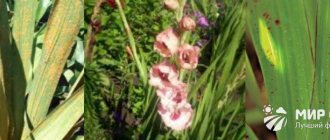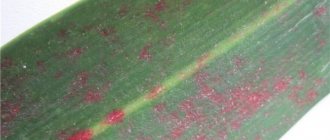How to properly care for perennial phlox in the fall
If a gardener knows exactly what needs to be done with perennial phlox in the fall, then he will be able to properly prepare the plants for winter. Thanks to care, they will withstand unfavorable weather and temperature conditions and will be able to delight you with their beauty next season.
Important! The root system of phlox is superficial, so you need to care for perennials very carefully: loosen, weed, and incorporate granular fertilizers into the soil.
Autumn feeding of phlox
Autumn fertilizing is standard for almost all garden crops. Perennial flowers at the end of the season need certain substances, and the soil is quite depleted after rapid flowering. Simply put, proper feeding will help restore the plant’s strength, prepare phlox for frost (increase frost resistance) and help it better survive winter and cold, and stimulate more beautiful, lush and long flowering next year.
By the way! Optimal timing for feeding phlox in the fall: early September.
Therefore, it is very useful to fertilize perennial phlox; potassium-phosphorus fertilizers should be used for these purposes. For example, you can feed with the following potassium and phosphate mineral fertilizers: Potassium Monophosphate, Superphosphate and Potassium Sulfate, a special fertilizer for autumn marked “Autumn” or “Autumn”.
Note! In the autumn, phlox and any other perennials should not be fed with nitrogen fertilizers. It is advisable to stop adding nitrogen altogether 1-1.5 months before the end of summer. Otherwise, the plant will begin to build up green mass, which will simply freeze out during frost, causing it to weaken or even die.
Note! It is important not only what to feed, but also how! This can be done with dry fertilizers and liquid solution:
- If autumn is rainy and humid, then you can simply lightly incorporate dry granules of mineral fertilizers into the soil.
- If the weather is dry, then you need to prepare a solution (completely dissolve the granules according to the instructions), and then water the plants. Don’t forget to water them with regular clean water before doing this!
By the way, an excellent natural potassium-phosphorus fertilizer is wood ash. It can not only nourish the plant, but also additionally deoxidize the soil, which means reducing the likelihood of fungal growth (after all, they feel at home in acidic soil). To do this, you need to scatter the ash around the plant, very lightly embedding it into the soil.
Pruning phlox in the fall: timing, diagrams, rules
Autumn pruning of perennial flowers is the most important procedure for caring for garden plants. Why do you need to prune phlox for the winter? Main reasons:
- First of all, pruning significantly reduces the likelihood of developing fungal diseases and breeding pests. That is, by removing the above-ground part, we do not allow pathogenic microorganisms and pests to overwinter and multiply in it.
- By the beginning of the growing season next season, the plant will be able to accumulate more nutrients in the rhizomes, thanks to which it will be able to grow stronger shoots.
- After this care procedure, it is easier to cover the plants for the winter and protect the plants from frost.
- Autumn pruning allows you to keep your garden, and specifically your flower garden, neat.
- The procedure makes spring care easier.
Autumn pruning of phlox is carried out according to the following scheme: the entire above-ground part is cut off flush with the ground, and stumps should not be left. A similar pruning method is used for herbaceous peonies. An important rule: the stems should not be pulled out, broken off or twisted by hand, because this can damage the renewal buds.
For this care procedure, you need to use a sharp pruner with a disinfected blade.
To carry out this procedure, you must choose the right time! When choosing the timing of pruning, it is important to focus on two factors:
- The condition of the perennial is of key importance: the phlox bush can be trimmed only after the above-ground part turns yellow and dries out.
- The event is carried out before the onset of stable frosts (1-2 weeks before) and when the first light night frosts occur.
Important! After you have trimmed the phlox, you must immediately remove plant debris. You cannot leave them anywhere in the garden, put them in a compost bin, or use them as mulch. The best way is to burn them.
Preparing perennial phlox for winter: mulching and covering
Sheltering phlox for the winter is the most important part of preparing the plant for wintering in open ground. The need for the procedure is due to the fact that part of the perennial root system is close to the surface of the earth and in harsh conditions it can freeze. In addition, the bush grows annually, that is, the rhizome occupies more area by several centimeters in width. Due to this growth in adult bushes, the rhizome begins to protrude from the soil. Therefore, in winter the plant may die or the shoots resulting from high-lying buds will grow weak. Therefore, it is very important to regularly mulch the bush, especially in autumn.
Thus, it is necessary to cover perennial phlox for the winter in regions with cold winters, for example, in the middle zone (Moscow region), in Siberia, in the Urals, in the Leningrad region, etc.
Perennial phlox are afraid not so much of the cold as of the lack of snow! Therefore, if you live in an area with frosty and snowless winters, then under no circumstances neglect preparing plants for frost.
In late autumn, after pruning, it is necessary to mulch the phlox with a layer of 8-12 centimeters. Compost, non-acidic peat, and humus can be used as mulch.
Important! Before laying mulch, be sure to loosen the soil!
If the winter turns out to be frosty and snowless, then when the soil freezes, it is recommended to pour loose garden soil onto a layer of mulch (one bucket per bush). If possible, the bush is covered with spruce branches on top of the ground.
Advice! If your phloxes need winter shelter, then it is first recommended to prevent the proliferation of pathogens by throwing a few crystals of copper sulfate into the middle of the bush.
How to replant phlox
It is better to replant phloxes at the time recommended for replanting peonies, that is, in late summer or early autumn. This is due to the fact that in early spring, when it is still cold, their roots are already beginning to grow.
In fact, phlox can be moved to another place even in the summer, during their flowering. You just need to do this very carefully, leaving as large a lump of earth as possible on the roots.
High-quality rooting of transplanted plants largely depends on the condition of the soil. Flowers love soils containing a lot of organic matter. Flowers need frequent watering and this must be taken into account when choosing a planting location.
After the bush is planted, sprinkle it with soil and immediately water it so that all the voids are filled with soil. The top of the flower must be well mulched with humus or compost. All weeds must be removed from the flowerbed in a timely manner, and the soil must be kept loose. Feeding after transplantation should be carried out on a regular basis for 1-2 months.
Transplantation and propagation of phlox by dividing the bush
If you are interested in transplanting and propagating perennial phlox, then in early autumn (in the first half of September) it is optimal to propagate the plant by dividing the bush (that is, the bush is divided into large parts and transplanted to a new place).
Advice! It is recommended to replant perennial phloxes every 4-5 years, followed by propagation by dividing the bush. The procedure is necessary to rejuvenate the plant.
You can divide a bush of perennial phlox according to the following scheme:
- The selected bush must be carefully dug up in a circle and removed from the ground; it is carefully shaken off the soil.
- First, you need to separate the plexus of root collars on the bush and divide the roots. It is better to separate with your hands; a knife is used only if you cannot divide the bush with your own hands (the knife is used to cut specifically the zones where the root collars grow together). Each division should have 3-5 thick stems, at their base there should be well-formed large renewal buds, and each division should have a small number of roots.
- Shoots are cut to 10 centimeters in height.
- It is also recommended to trim the roots, leaving about 15 cm in length.
Now you need to transplant the phlox divisions to another place; step-by-step instructions will help you do this:
- Select in advance a suitable place for growing the crop: it should be sunny, with loose, nutritious, moderately moist soil.
- It is advisable to prepare the site in advance (10-14 days in advance): the soil is dug up using a shovel, weeds are removed from the ground, after digging, wood ash (100 g per sq.m.) and mineral fertilizers containing potassium and phosphorus (for example, Monophosphate) should be added potassium).
- Before transplanting, you need to make holes at a distance of 0.4-0.6 meters from each other, about 20 cm deep.
- Fill each hole with water and wait until the water is completely absorbed.
- Now you need to plant a piece of phlox in the hole, the plant should be a little deeper than it grew before (the top of the rhizome should be about five centimeters below the surface of the ground).
- Fill the planting holes with soil and lightly compact the soil.
- Now you should water the plants generously. It is also useful to pour a solution of a root formation stimulator, for example, Kornevin.
- After replanting, you need to mulch the area with a layer of 10-12 cm.
With the end of the summer period, it is important to take care not only of the garden “breadwinners”: fruit trees, berry bushes. It is important to devote time to the decorative component of the garden: ornamental and flowering shrubs, perennial flowers, including beautiful phlox. After all, you can not only get benefits from a garden, it can and should also give aesthetic pleasure, which is easy to achieve with lush and elegant flower beds! And proper autumn care will help you achieve these goals.
Diseases and pests of phlox with photographs and methods of treatment are an important topic for the gardener. If they are not properly cared for, perennials lose their decorative properties and can quickly die.
Measures to combat phlox fungal diseases
A reliable way to prevent phlox disease is to create good conditions for their growth and development. Phloxes need to be replanted after 3-4 years, as young plants suffer less from diseases. You should avoid dense plantings, systematically remove weeds, destroy plant debris and dig up the soil around the plant with a layer turnover. In the spring, it is necessary to mulch phlox plantings with peat or humus to avoid infection of young leaves from old ones. After complete regrowth of plants, carry out 2 - 3 preventive treatments with fungicides: 0.5% copper oxychloride, 0.4 - 0.5% zineb, with an interval of 10 - 15 days. When the first signs of powdery mildew appear, it is necessary to treat the plants with a 0.5% solution of soda ash or washing powder at intervals of 10 - 15 days until the fungal coating completely disappears.
Fungal diseases of phlox with photographs and their elimination
Most often, when growing perennials, gardeners encounter fungal diseases. Their development is especially favored by soil that is too wet or acidic.
Rust
A fungus from the genus Gymnosporangium infects phlox mainly in June. Characteristic red-brown spots appear on the leaves of perennials. Gradually, the plant begins to weaken and fade, loses its decorative effect, and in rare cases may die completely.
Rust stains on phlox grow quickly
If the damage is minor, remove the affected leaves and treat the phlox against the disease with copper oxychloride or iron sulfate. If the perennial does not respond to treatment, it must be removed from the flowerbed and burned.
Septoria
The disease is caused by the fungus Septoria phlogis. First, grayish spots appear on the stems and leaves of phlox, then they acquire a yellow tint and a reddish border along the edges. If left untreated, the affected plates begin to die, and the perennial gradually fades.
Septoria usually develops in early June
The fight against septoria is carried out using iron sulfate and HOM solution. Spraying should be carried out twice from the onset of symptoms, the interval is 2 weeks.
Powdery mildew
The disease appears on phlox leaves in late summer. It is caused by the fungus Erysiphe cichoracearum, and the first symptoms are whitish spots on the green parts. As the plaque spreads, the leaves dry out and wither, and the perennial begins to grow worse.
Powdery mildew develops in dense plantings and in waterlogged conditions.
For autumn treatment of phlox against disease, it is recommended to use a 1% solution of soda ash. The flowerbed is sprayed three times at weekly intervals.
The disease is caused by the fungus Phoma betae; the first symptoms are curling and yellowing of the leaves closer to the surface of the ground. The stem at the bottom darkens and cracks, becoming particularly fragile.
With Phoma, the lower leaves of the perennial and the base of the stem darken and dry out.
If the disease was noticed in time, then phlox can be saved by spraying with Bordeaux mixture. They are carried out 3-4 times in a row with a break of 10 days.
Wilt disease is caused by a fungus of the genus Verticillium. First of all, the underground part of the plant suffers, then the functioning of the vascular system is disrupted, and the perennial withers.
Verticillium wilt can be cured in the earliest stages with treatment and drastic pruning.
There is no effective treatment for Verticillium wilt. If the phlox has not suffered too much, you can simply cut the shoots flush with the ground, water the soil with Gamair's solution and wait for new healthy stems to appear. If the root system is severely damaged, the perennial needs to be eliminated and the soil disinfected.
Gray rot
Botrytis disease, or gray mold, develops under the influence of the fungus Botrytis cinerea. Most often, phlox suffers in cool and humid weather; growing brown spots appear on the stems, buds and leaves. If left untreated, the disease goes to the roots and leads to wilting.
The fight against phlox disease brings results in the early stages. A solution of Alirin and Gamair is used, treatment is carried out 2-3 times per season.
Gray rot spreads from top to bottom - from the above-ground part to the roots
Fungal diseases of phlox
Fungal diseases can be caused by:
- the influence of the pathogen on the leaves, the result is various spots, rust, and powdery mildew. Leaf spots are named after the pathogens that cause the disease: Alternaria blight, phyllostictosis, cercospora blight, septoria blight, rust on leaves is caused by rust fungi;
- exposure of the pathogen to leaves, stems, buds, flowers, causing disease with gray mold, or botrytis;
- the influence of the pathogen on the root collar and the base of the shoots, resulting in the disease with phomosis (dry rot);
- exposure of the pathogen to the roots, causing verticillium wilt and fusarium.
Alternaria phlox
Spots, rust, powdery mildew . From mid-July, dots or small spots of various colors may appear on phlox leaves (red - rust-colored, dark brown, brownish, etc.). They gradually increase in size, the leaf dries out and dies. These are signs of phlox disease with leaf spot (alternaria, phyllostictosis, cercospora, septoria) or rust , diseases caused by parasitic fungi. Rust is a particularly dangerous disease; due to its ease of spread, the disease appears as yellow-orange powdery spots on leaves and flower stems. The causative agents of the disease develop in above-ground parts (leaves, stems, flowers) and feed on plant cells. As a result, the evaporation of moisture in an infected plant increases, the water balance and metabolism are disrupted, the ability for photosynthesis is reduced, growth slows down and the quality of seeds deteriorates. Advanced rust usually leads to the death of the plant. At the same time, the pathogens have time to move to healthy crops. Billions of rust fungus spores mature on one plant. Spores are easily carried by the wind not only from tree to tree or from garden to garden, but also over very long distances. The development of the disease in crops growing in open ground is facilitated by increased air and soil humidity, high temperature, and wind. The appearance of the disease is “helped” by excess nitrogen and lack of potassium in the soil. Rust does not tolerate severe frosts, but can retain its spores in a thick layer of mulch in warmer winters. The optimal temperature for the development of the disease is 24-280C and relative humidity is about 85%.
|
|
|
|
And in August, powdery mildew . On the leaves, and then on the shoots and inflorescences, you see grayish-white spots, first in the form of individual dots, which then merge and appear as a powdery coating. Carefully inspect the plants so as not to miss the onset of the disease. It spreads very quickly and you have a very short period of time to take action. Humid air, temperature changes, and the proximity of plants that are easily susceptible to powdery mildew contribute to the disease.
Gray mold , or botrytis , is caused by the fungus of the same name Botrytis cinerea. Leaves, stems, flowers, buds are affected, and growing spots appear on them. Massive damage to plants most often occurs when the air temperature drops to 15-18°C and humidity rises. The spores, along with moisture, settle on the leaves, stem and flower, germinate and penetrate into the plant tissue. The infection spreads from top to bottom - from leaves and stems it penetrates into the bulbs or roots of the plant.
Gray rot of phlox
Peonies are especially affected. Wet weather and excess nitrogen promote the disease. I come to a neighbor on a friendly visit, the hostess has left, and there... poor peonies. I diluted Alirin with Gamair in maximum concentration and treated the bushes. All! The peonies recovered, and when the owner arrived, everything was in order. Therefore, prevention and once again prevention.
Fomoz . This disease is caused by a parasitic fungus. Phoma phlogis. A sign of the disease is premature curling and drying of leaves on the lower parts of the stem. The leaves dry out, then the shoots are affected, they become fragile, brittle, crack easily, the bush is stunted in growth, and the source of the disease is damage to the root collar.
It is necessary to distinguish phomosis from the physiological drying of the lower leaves and cracking of the stems , which is often observed in phlox. This is a consequence of an imbalance in the amount of water consumed by the aboveground part and the amount of water supplied by the roots. Drying of the lower leaves is not a disease, but a physiological process. In spring, with a sufficient supply of moisture, the stems and leaves develop quickly. If there is no rain at the beginning of summer or the plants are not watered, the leaves dry out. The same phenomenon in phloxes is observed with a late spring or summer transplant. Abundant and regular watering significantly reduces this phenomenon. Drying of the lower leaves of plants can occur as a result of inept or improper watering of them with solutions of mineral fertilizers. It must be remembered that plants should be fed with liquid fertilizers in the evening or in cloudy weather only after watering, followed by spraying the lower leaves with clean water. On well-fertilized but insufficiently moist soils, leaf drying is observed to a greater extent than on unfertilized soils. This is explained by the fact that the lack of moisture in the soil creates a high concentration of soil solutions, which has a depressing effect on the plant.
On some varieties of phlox, longitudinal cracking of the stems is observed from late May to early July during rapid plant growth. A similar phenomenon occurs more often in humid, warm years with one-sided nitrogen nutrition of phloxes in the spring, a lack of lime in the soil, and when plantings are thickened. Thus, stem cracking is not a disease, but a physiological phenomenon. With timely liming and the application of full mineral fertilizer, cracking of the stems is observed less frequently. In shaded areas, phlox bushes should be planted sparingly to ensure air circulation between them. You should not water the bushes with cold water during the day or in hot weather.
Verticillium wilt of stems occurs most often in acidic soils and wet places. The disease is caused by the fungus Verticillium albo-atrum. The leaves begin to suddenly wilt and shoots fall. The soil pathogen, through minor damage to the roots, penetrates the vascular system of the phlox, clogs and poisons it. Outwardly healthy shoots wither and die. The mycelium grows on the surface of infected roots in the form of a whitish coating, which then turns reddish-brown. The disease is focal in nature and most often appears on acidic soils at temperatures of about 25-270C. The pathogen is surprisingly tenacious, retaining its activity in the soil for up to 15 years.
|
|
For the prevention and treatment of the disease in the initial stage, use Glyocladin (a.v. - Trichoderma harziannum). This microbiological fungicide effectively suppresses fungal diseases in the soil: root rot, wilts of various etiologies, verticillium, late blight. The drug is produced in the form of tablets, insoluble in water, with a shelf life of 2 years. Moisten the soil around the plant, place one or two tablets (depending on the size of the plant) near the roots , mulch with organic matter and maintain moisture for at least a few days. The product works well at a humidity of 60-80% and a temperature of 14-27oC. Trichoderma forms a well-developed mycelium in the soil and is a competitor and antagonist of phytopathogenic fungi. High activity leads to growth arrest and death of pathogenic fungi. If you are using the drug for the first time, it is advisable to use it twice per season - in spring and autumn. After the soil is healthy, you can switch to a single application. Trichocin , acts similarly .
In case of mass death of phlox, diseased bushes should be carefully dug up along with the soil, the soil should be shaken off, the stems should be cut off, the roots of the bushes and the lower part of the stems should be immersed in a solution of preparations such as Maxim or Vitaros .
The treated bushes are planted in a new place, covered with cut plastic bottles.
Description of viral diseases of phlox and methods of treatment
In addition to fungi, phlox can be damaged by viral diseases. They are difficult to treat; the main focus should be on prevention.
Ring spot
Tomatto ringspot virus can be recognized by the appearance of light spots and rings on the leaves. The disease not only changes the color of the phlox, but also causes the green parts to become deformed and wither.
Ring spot spreads to phlox from vegetable crops, and the nematode virus transmits it
It is impossible to cure ring spot, so the phlox is eliminated and burned, and the soil is spilled with formaldehyde or chlorine-containing bleach.
Advice! The carriers of the ringspot virus are nematodes. When a disease appears, it is necessary to carry out pest control.
Curly stripe
The Tobacco rattle virus, contrary to its name, affects not only tobacco, it affects hundreds of plants. The symptoms are very similar to other viral diseases - an uneven mosaic pattern appears on the leaves and flowers of phlox.
A mosaic pattern of curly stripes quickly gives way to spots and leaf deformities
Over time, the green parts become deformed and become covered with necrotic spots. A viral disease cannot be cured, so the perennial will simply have to be destroyed.
Necrotic spotting
A disease called Necrotic ringspot virus, or cucumber mosaic virus, leaves small brown spots on phlox leaves. Over time, they expand and merge with each other.
Necrotic spot spreads quickly and leads to wilting
If perennials have suffered from necrotic spotting, they need to be burned and the soil disinfected. Garden tools are also disinfected.
Leaf curl
The disease occurs due to the Phlox necrosis vien virus, or vein necrosis. In the affected perennial, black or light spots and tuberosity appear on the upper side of the leaf blades, and the stems become bent.
With viral curl, phlox leaves begin to bulge
When infected with curl, the plant can only be removed from the site; there is no treatment for the virus. It is recommended to spill the soil with a formaldehyde solution and spray the neighboring plantings with Bordeaux mixture.
Variegation
A common disease of phlox is variegation, which is caused by the rhizome mosaic virus, or Arabis mosaic virus. Symptoms appear during flowering - numerous whitish stripes appear on the petals.
Although diseased plants may look strong, if they have variegated petals, it is better to destroy them; the virus easily spreads to neighboring plantings. After eliminating the diseased specimen, the soil is spilled with formaldehyde or Belize.
Variegation of petals is incurable and destroys the varietal characteristics of flowering plants
Rattle
The disease is a type of mosaic disease and is caused by the ring spot virus. When rattling occurs, numerous uneven light-colored spots appear on the leaves. Over time, dead areas appear in place of the spots, and the phlox begins to fade.
Rattles are characterized by a mosaic pattern on the leaves.
There is no treatment for rattling disease, so diseased plants are destroyed. Since the virus indicates the presence of nematodes in the soil, after eliminating the phlox, you need to shed the soil from pests.
Threadiness
The threadlike virus develops against the background of cucumber mosaic infection, and the disease is usually transmitted by nematodes. In affected phloxes, the structure of the leaves changes - the plates become narrow, deformed and curled. The shoots become fragile, the perennial stops growing and does not bloom.
When threadlike, the stems and shoots become very thin and weak
If the symptoms of threadiness are pronounced, the phlox must be destroyed and disinfected the soil on which it grew.
Physiological disorders when growing phlox
It is important to know when growing phlox, pests and diseases are not the only problem you may encounter. Unsuitable soil composition, violations of agricultural technology and cultivation rules lead to damage to plants, which can cause their death or disease. In some cases, they can be similar to fungal and viral infections.
Drying and falling leaves
Most often it is a consequence of lack of moisture. The plant reduces the area of moisture evaporation by shedding its lower leaves. Similar symptoms occur when phlox are transplanted to a new place in the summer. It is necessary to adjust watering, shade the plant and introduce spraying of the ground part.
Cracking of stems
Often the growth of stems is accompanied by their longitudinal cracking. Then the damage becomes covered with growths (callus), and the stem becomes fragile, thins and often breaks off under the weight of the foliage. Cracking can occur due to lack of watering during hot and dry summers.
Phlox stems cracking
To avoid the problem, do not allow plantings to thicken and excess nitrogen in the soil. In dry weather, water in the evenings, after the heat has subsided. For tall types of phlox, provide supports or fences.
Mycoplasma diseases
Mycoplasma diseases of phlox can be classified as a separate group. They are caused by microscopic pathogenic organisms, which in structure are something between bacteria and viruses.
The most famous mycoplasma disease is jaundice, which interferes with the development of phlox. When infected, the flowers lose color, turn green and become more like small leaves, and the perennial stops growing.
With mycoplasma jaundice, both the leaves and the flowers themselves change color in phlox
Cicadas are usually carriers of jaundice. The disease cannot be cured; the phlox is removed from the area.
Phytoplasmosis
The symptoms of phytoplasma are very similar to a number of viral and fungal diseases. When infected, phlox stops developing, stops producing flowers or produces green leaf-like structures. The color of the leaves also fades, spots appear, and the shoots become thin and spindly.
Phytoplasmosis disturbs the color, leaves spots and causes dwarfism of plants
Phytoplasmosis can be diagnosed by a combination of symptoms; other diseases usually manifest themselves only as individual symptoms. It is impossible to cope with mycoplasma disease, so efforts are directed towards protecting neighboring plants. They are treated against cicadas that carry the disease, and fed with potassium and phosphorus to strengthen the immune system.
Phlox jaundice
A rare disease caused by a pathogenic microorganism - mycoplasma. Mycoplasmas are found in cell sap and are carried by sucking insects, often by leafhoppers. The disease manifests itself in the loss of color of inflorescences and stunted growth of shoots. The inflorescences become green, the petals and stamens become filamentous, then the phloxes stop blooming. Many side branches grow on the stems, the leaves turn yellow, change shape, and curl.
The best way to combat mycoplasma diseases is prevention. You need to choose the right place for the flower garden and avoid thickening, for which the bushes are replanted every 4 years. Young specimens are less likely to suffer from jaundice and other diseases.
In autumn, plant debris is collected and burned to prevent it from becoming a source of infection. At the beginning of summer, preventive spraying is carried out with Zineb or Fundazol. Bushes with obvious yellowness are dug up and destroyed.
Diseases due to violations of growing conditions
In some cases, perennials turn yellow and wither not due to the fault of fungi and viruses, but due to improper care. It is necessary to study the physiological diseases of phlox and their treatment with photos in order to solve problems in the early stages.
Drying leaves
In hot summers, phlox may suffer from lack of moisture. If there is no watering, the perennial gets rid of individual leaves on its own, starting from the bottom. At the same time, the area of evaporation is reduced, and the plant safely waits out the dry period.
When the leaves dry out, it is enough to adjust the soil moisture so that the phlox stops withering
As a treatment, you just need to restore watering, and physiological processes will return to normal.
Cracking of stems
At the beginning of summer, long cracks may appear in the lower part of the phlox, which will eventually close with scar tissue. In general, cracking does not harm the health of a perennial, but damaged stems flatten and weaken, so they can break from the wind or simply under the weight of flowers.
To avoid cracking, phlox should be watered with warm water.
A physiological disease occurs against the background of acidified soil and too cold watering during the growth period. To solve the problem, it is enough to lime the soil and monitor the water temperature.
How to treat and how to treat phlox for diseases
On specialized websites you can find photographs of phlox diseases and methods for eliminating them. As a rule, treatment is selected based on the type of pathology.
Thus, for powdery mildew, treatment with Topaz, Skor or Vitaros is recommended. Among the traditional methods, spraying with whey, soda-soap solution, garlic or ash tincture has worked well.
When dealing with Phoma, agricultural technicians advise using the products “Hom” and “Abiga-Pik”. They effectively destroy the fungus. Among the biological products, there is O and “Fitosporin”, which cope with many fungal diseases.
Most viral diseases cannot be cured. Infected crops are destroyed, and planting sites are thoroughly disinfected. Diseases caused by violation of growing conditions are treated by normalizing the watering regime and adjusting fertilizing.
Photos of phlox diseases and their treatment can be found on specialized websites and forums. However, most experienced gardeners advise not so much to treat diseases as to organize timely prevention.
How to treat phlox against diseases in autumn and spring
Autumn treatment of phlox against diseases includes spraying with preparations such as “Profit” (for septoria), 1% Bordeaux mixture (for spotting and phomosis), “Oxychom” or a solution of colloidal sulfur (for powdery mildew).
In the spring, treatment is carried out with copper sulfate or a solution of foundationazole.
Phlox pests
In a summer cottage, phloxes can be damaged by numerous insects. Most of them enter the active period in early spring, so the gardener needs to pay special attention to preventive treatments.
Nematodes
Small white worms live in the stems of phlox plants and feed on their tissue. The leaf blades of infected perennials become wavy at the edges, peduncles and buds are deformed and twisted.
When affected by nematodes, phloxes become deformed and wrinkled.
Nematodes are difficult to control, and usually the affected phlox is removed from the flowerbed. It is important to treat other plants with Aktara, Actellik and Nematophagin to prevent the pests from spreading.
Slobbery Penny
Pennywort larvae appear in May or June and begin to feed on phlox juices. You can recognize the presence of a pest by a trail that looks like saliva.
If the perennial is not heavily infected, then the pennies can be removed manually. In case of a serious pest invasion, you need to treat the flowerbed with Fufanon three times during the summer.
Pennywort is difficult to confuse with other phlox pests due to its characteristic mark
Slugs
Mollusks actively reproduce in damp, cold weather and feed on the stems and leaves of perennials. Pests leave behind large holes and depressions, and this makes it possible to recognize their presence; slugs themselves can rarely be seen during the day.
You can find out about the presence of slugs on phlox by large holes in the leaves.
You can repel slugs by dusting your flowerbed with tobacco dust or wood ash.
Cutworm caterpillars
Green cutworm butterfly caterpillars feed on young shoots and leaf blades. The pest appears at the end of spring and can completely eat up the phlox within a season, especially if the summer is warm and the cutworm butterfly actively reproduces.
Cutworm caterpillars eat phlox in hot weather
At the first sign of infestation, the caterpillars are easiest to collect by hand. If there are a lot of pests, you can treat the plant with Aktara or Actellik.
Cruciferous black flea beetle
Small black bugs, no more than 3 mm in length, appear in mid-spring when temperatures rise above 15 °C. By feeding on leaves, they literally scrape off the top layer of tissue from them, which is why ulcers and holes appear on the plates.
The cruciferous black flea beetle is very small in size, but lives on plants in large colonies.
To combat flea beetles, dusting with wood ash or fluff lime is usually used. You need to carry out the procedure 4 times at intervals of 10 days.
Bronze beetle
The beautiful golden-green beetle is beneficial in the garden, but is more of a pest for phlox. During the flowering period, it feeds on their pollen, as well as bud petals and peduncles, as a result of which perennials can die.
Bronze, which is generally useful, harms phloxes because it eats their flowers.
If the beetle has not multiplied too much in the garden, then it is collected by hand. In case of serious damage, you can use conventional insecticides - Actellik, Aktara, Decis.
Nematode
The most dangerous pest of phlox is the phlox race of stem nematode Ditylenchus dipsaci var. phloxidis. This is a small translucent worm that settles mainly in the stems of phloxes and feeds on their juice. The development cycle lasts from several days to several weeks, depending on air temperature and humidity. The optimal temperature conducive to the reproduction of nematodes is 18-240C, and at temperatures above 400C the nematode and its eggs die. Therefore, today the main method of combating nematodes is thermal . But this method is not suitable for phlox; its divisions do not survive after treatment with hot water.
|
|
The insidiousness of the disease is that in the early stages it is quite difficult to distinguish a diseased plant from a healthy one; signs of nematode damage are clearly visible only in late June - early July. The main symptom is the threadlike appearance of the apical leaves, thickening of the stems, the plant becomes as if squat. Sometimes diseased phloxes even bloom, but the inflorescences look rather ugly. If a nematode infection is detected, first of all, it is necessary to avoid watering the plants from above; it contributes to the rapid spread of the disease, especially in warm weather.
A severely affected plant dies. Not only phloxes, but also other plants suffer from stem nematodes. In nature, the nematode infects 400 plant species and has powerful digestive glands. In general, the nematode is the scourge of phlox. Developers of plant protection products have not yet proposed anything radical to combat this disease in private farms. Nematicides approved for use on farms are so dangerous that I won’t even give their names, so as not to take it upon myself.
In the literature, it is recommended to cut the upper parts of the shoots in May to improve the health of collections and save valuable varieties. Current research allows us to conclude that early spring cuttings or harvesting cuttings in the fall in order to improve the health of varieties should be carried out at soil temperatures less than 100C . Analyzes of phlox stems for nematodes in the spring show that there are no nematodes yet in stems 5 cm high. The nematode is already present in the lower part of the stem at a height of 6-7 cm, but is not yet present in the apical part. At this altitude and soil temperature below 100C, you can cut the tops of phloxes in the spring to preserve the variety and get rid of the nematode. When the stem height is 9-10 cm, the nematode has already reached the top of the phlox.
The most effective way to combat nematodes is manual culling of plants. Inspect your plantings regularly; if you see one or two diseased stems in the bush, immediately break them as close to the roots as possible, and into the fire.
Peas, mustard, parsley, dill, marigolds, and calendula are trapping plants. They accumulate nematodes. Alternate planting phlox and marigold. In the fall, carefully dig up the marigolds with roots and burn them. It’s even better to sow dill between phloxes; infection with nematodes and other diseases is sharply reduced. Dill can be eaten or the seeds collected from it; the nematode does not harm people. Weeds are nematode reservoirs, so try to keep dandelion, sow thistle, nettle, and woodlice out of phlox plantings. Slugs eat diseased leaves and secrete nematodes.
The nematode does not live in the ground. Its larvae are surprisingly tenacious. They overwinter in renewal buds, at the base of shoots, in rhizomes and in dry plant debris. Therefore, in the fall you need to carefully clean the beds. In spring, nematodes penetrate the growing stems and rise up with them, infecting the plant.
Preventive measures
Treatment of phlox diseases does not always bring results. It is easier to protect perennials from wilting with proper care:
- Most fungal diseases develop in waterlogged soil and in dense planting conditions. Perennials should not be spaced too tightly, and watering should only be done when the soil begins to dry out.
- It is recommended to loosen the soil in the flowerbed regularly. It is especially important to do this in the spring and closer to winter, since insect larvae and fungal spores wait out the cold in the upper layer of the earth.
- With the onset of autumn, it is necessary to remove all debris from the site - plant litter also helps pests and pathogenic bacteria survive the winter.
For prevention, phlox can be sprayed both in autumn and spring.
With the onset of spring warmth, preventive spraying should be carried out. It is also recommended to treat phlox in the fall against pests and diseases; it allows you to destroy larvae and fungi before leaving for the winter. You can use Bordeaux mixture, which helps with most ailments.
Diseases and pests of phlox with photographs and methods of treatment help to promptly recognize the disease that has affected perennials. Not all viruses and fungi can be successfully combated, so the main attention is paid to quality prevention.
There is no person who is indifferent to phlox. A colorful palette of flowers will decorate any garden. The only thing that upsets is the plant’s tendency to diseases. A sign of the disease is the appearance of white spots on the leaves of the flower, similar to spilled flour. This indicates that powdery mildew has appeared on the phlox. How to deal with it will be discussed in the article.
Preventive treatment of planting material
Rhododendron diseases: why the leaves turn brown
Sometimes the cause of infection is poor-quality planting material. Therefore, it is necessary to control the plants from which it was obtained.
Disease Prevention
Preventative measures can significantly reduce the risk of disease. To do this, you need to pay attention to the following points:
- the soil needs to be slightly acidic;
- Avoid letting the soil dry out too much;
- Do not overfeed phlox with nitrogen fertilizers;
- Potassium must be present in the fertilizing;
- when pruning, you need to remove all weak and diseased parts;
- preventive spraying of bushes should be carried out;
- take care of the destruction of pests.
If phlox diseases are recognized in time and measures are taken, then in most cases the flowers can still be saved. To do this, you need to know how to recognize any ailment and how to cure it.
Video
Causes and characteristics of the disease
Many, of course, are interested in why a white coating appears on the leaves of phlox and what to do in this case. Powdery mildew is nothing more than a fungus. It appears as a result of infection with fungal bacteria that live in the soil. The conditions are just right for the disease and it will affect large areas. If you grow a flower correctly, following all the rules, then the disease will not manifest itself.
Multicolored phloxes in the garden
Fungal bacteria will develop if:
- In the summer, the weather is rainy, constantly cloudy and humid, the sun rarely appears. Such weather conditions are negative for plants that are planted on the street or balcony;
- a large amount of fertilizer containing nitrogen has been added to the soil;
- the flowers are planted very densely and shade each other;
- The appearance of fungus is also affected by improper watering of the plant. You cannot water phlox very often; the soil must be allowed to dry out. Also, in dry weather, it is not recommended to immediately pour a huge amount of water under the flowers.
Important! Fungal spores are easily airborne. This can even happen at the moment when the gardener touches the diseased stem with his hand and then approaches a healthy flower.
Abundant humidity
In addition to pests, improper watering is a negative factor that harms flowers. Overwatering is a common culprit for the appearance of a yellow tint on phlox leaves. Despite the fact that water is the main resource for ensuring the growth and development of plants, it happens that this particular source of life support for flowers becomes their enemy. As a result, the main question arises: why the lower leaves of phlox turn yellow.
Phlox needs moderately moist soil to grow productively and bloom profusely. Too much water prevents the plant from getting enough nutrients. The root system is in a swampy state and is deprived of oxygen. As a result, rotting of the roots occurs, and this is preceded by yellowing of the leaves followed by falling.
Following the rules of watering, phloxes are not watered if the top 2-3 cm layer of soil is already saturated with moisture. If water remains in the ground, despite all the measures taken to adjust the humidity, it is worth improving the drainage. A small amount of compost and pebbles are placed in the top layer of soil. After some time, the compost decomposes and the soil weakens, facilitating drainage. Small stones prevent the soil from compacting and compacting.
Signs of powdery mildew
If the stems and leaves turn white, this means that the phlox has begun to hurt. Bacterial spores infect the plant and begin to develop rapidly. In just a few days, the disease covers the lower part of the leaves: they turn yellow, dry out and fall off.
If you examine the affected area under a magnifying glass, you will notice that the sore spot is covered with small wounds that are formed as a result of the action of the mycelium on the plant tissue. The plaque that appears on the leaves does not allow them to breathe. This stops the process of photosynthesis. Therefore, you need to know what powdery mildew is on phlox and how to get rid of it so that the plant continues to be pleasing to the eye.
"Rodents"
There are also a number of pests that eat phlox leaves, stems, buds and flowers, these are slugs, snails, slobbering pennies, and various caterpillars . These pests are especially dangerous during the period when young shoots and seedlings are growing.
If there are still a few of them, it is better to collect them manually and then destroy them. Otherwise, it is worth treating the plant with drugs against sucking and gnawing insects. You can also fight slugs and snails by arranging traps for them in the form of large leaves, planks, or pieces of fabric. They usually hide from the sun there during the day. You can also scare away pests from plants by scattering ash, tobacco dust, sawdust, and metaldehyde granules around. Recently, phloxes have been increasingly damaged by thrips , which are almost invisible due to their small size, but the results of their activity are very noticeable. This is most noticeable on varieties that have a dark color. After all, feeding on plant juices, thrips damage the surface of the petals and leave unsightly whitish marks in the form of blurry spots.
To destroy these insects, it is necessary to promptly treat the inflorescences even in the budding stage with any of these systemic insecticides: actar, commander, confidor, etc.
That’s probably all I wanted to tell you about the diseases and pests of our beloved phlox. I, of course, wish you, my dear readers, that the plants in your gardens never get sick, but as they say, “forewarned is forearmed.”
See you soon, dear readers!
How to deal with powdery mildew
The fight against the disease must be approached comprehensively. First of all, you need to reconsider your methods of caring for flowers and correct all obvious mistakes. First steps to treat a plant:
- Phloxes need to be watered in summer only when the soil underneath them is completely dry;
- stop spraying the leaves of the plant until it is completely cured;
- if possible, transplant phloxes to an open area, where they will be exposed to sunlight for a longer time;
- be sure to thin out dense plantings, remove leaves located near the ground;
- do not fertilize sick plants, and after treatment, use only fertilizers that contain potassium and phosphorus.
Phlox affected by powdery mildew
Important! If you do not reconsider the method of care and do not eliminate errors, flower treatment will be ineffective.
After all errors are corrected, you can begin treatment. Leaves that are covered with white spots must be promptly removed and burned. Then treat the plants with fungicides. These drugs do not allow the fungus to multiply and stop all processes that began in the plant due to exposure to bacteria.
Treatment of phlox with pesticides
How to properly spray the plant is indicated on the packaging of the substance that was chosen for treatment. Process flowers once a week. The most effective fungicides recognized by gardeners are:
- topaz;
- pure flower;
- fast;
- balleiton;
- topsin;
- foundationol.
They will be equally effective for processing both flowers and berries.
Important! But it should be remembered that before using them for their intended purpose, you need to carefully study the instructions and strictly follow the recommendations.
Traditional methods
If there are no pesticides at hand, then how to treat the white coating on phlox? Most gardeners still choose old grandmother's methods to get rid of plant diseases. All these products are cheap, and their ingredients are found in every home, so preparing medicinal solutions is not difficult.
- Gardeners most often use a solution of ash. To do this, soak 150 g of wood ash in 1 liter of water and let it brew for two days. After this, add 4 g of gray laundry soap to the solution, completely dissolve it and treat the phloxes. The procedure must be repeated after 14 days.
- For the second recipe, you will need to take 400 g of soda ash, pour 1 liter of water into it and mix thoroughly. After this, add 400 g of gray laundry soap, previously crushed into shavings, into the solution. Allow the soap to dissolve and process the phlox. Repeat the procedure after two weeks.
- You can also fight the disease with cow dung. To do this, it is also diluted with water and used as a fungicide.
- Phloxes are also relieved from diseases by infusions of weeds. Any weed that grows in the garden is used. It is filled with water and allowed to brew. After five days, the infusion is filtered and used for its intended purpose.
Serum diluted with water is excellent for treating phlox disease.
- It helps to destroy horsetail fungus. It can be taken either dry or green. Infuse the plant in 10 liters of water for 24 hours. After this, the solution is boiled, cooled and filtered. The leaves of the plant are sprayed with the prepared substance.
- Gardeners also have a positive attitude towards the product prepared on the basis of whey. To do this, 100 g of dairy product is diluted in 1 liter of water and left for 24 hours to infuse. Only after this the finished solution can be used for its intended purpose.
- No less popular is the preparation made with garlic. To prepare it, you will need to take 50 g of garlic, chop it into porridge, add 2 liters of water and leave for a day. After this, the solution is filtered and the affected areas of the flowers are treated with it.
Important! All the ingredients included in the given recipes are not dangerous for flowers, but with their help it is easy to get rid of fungi.
Advice from summer residents and gardeners
Experienced gardeners recommend that all beginner amateurs first of all adhere to the rules of caring for phlox. The most important points:
- you need to select varieties that are suitable for planting in a particular place;
- perform landing strictly according to instructions;
- choose an area where flowers will grow comfortably and smell fragrant;
- notice the appearance of diseases and pests on the plant in time and take the necessary measures;
- Phlox should be watered sparingly, being careful not to overwater them.
Disease resistant phlox
The problem of additional treatments against diseases and pests can be solved by planting resistant varieties, namely:
- "Bright Eyes" is a medium-growing pale pink phlox with a strong aroma.
- "David" is a crop with snow-white inflorescences and good shade tolerance.
- "Candy Twist" is a paniculate, striped variety with a sweet scent.
- 'Home Fires' is a drought-tolerant perennial with bright pink flowers.
- "Early Spring Blue" is a creeping phlox that forms a dense carpet of lavender flowers on the site.
- All these varieties are highly resistant to most diseases and pests, which means they are suitable for beginners in floriculture.
Prevention of diseases and pests of phlox
With any disease, it is easier to prevent it than to cure it. Therefore, you need to know what preventive measures need to be taken regarding powdery mildew on phlox.
- First of all, it is recommended to sprinkle the soil near the plant with wood ash.
- You should immediately remove fallen dry leaves from the flower garden and pull out weeds.
- In the fall, when digging the soil, add fertilizers containing copper. In spring, it is imperative to use mulch.
- For prevention, plants are treated with a solution of Bordeaux mixture or copper sulfate.
Important! All methods of treating powdery mildew are applicable to other crops. But, if you know the rules of plant care and disease control measures, then growing phlox and other flowers on your site will only bring joy.
Fomoz
Symptoms of this disease manifest themselves as follows: the stem of the plant at the base begins to turn brown, becomes loose, then becomes corky, cracks and breaks off very easily, and the leaves at the bottom of the stem first turn yellow and dry out after a while.
Phomosis appears mainly during the period of budding and flowering of phlox and often on bushes of the second or third year. This disease is mainly spread through contaminated planting material. The disease is very difficult to treat and it is best if you want to save your favorite variety of phlox, to cut healthy young parts of the plant after pre-treating them.
But still, we should fight for the plant, although the treatment process is quite lengthy, and antifungal drugs such as foundationazole, vectra, speed, maxim can help us with this.











